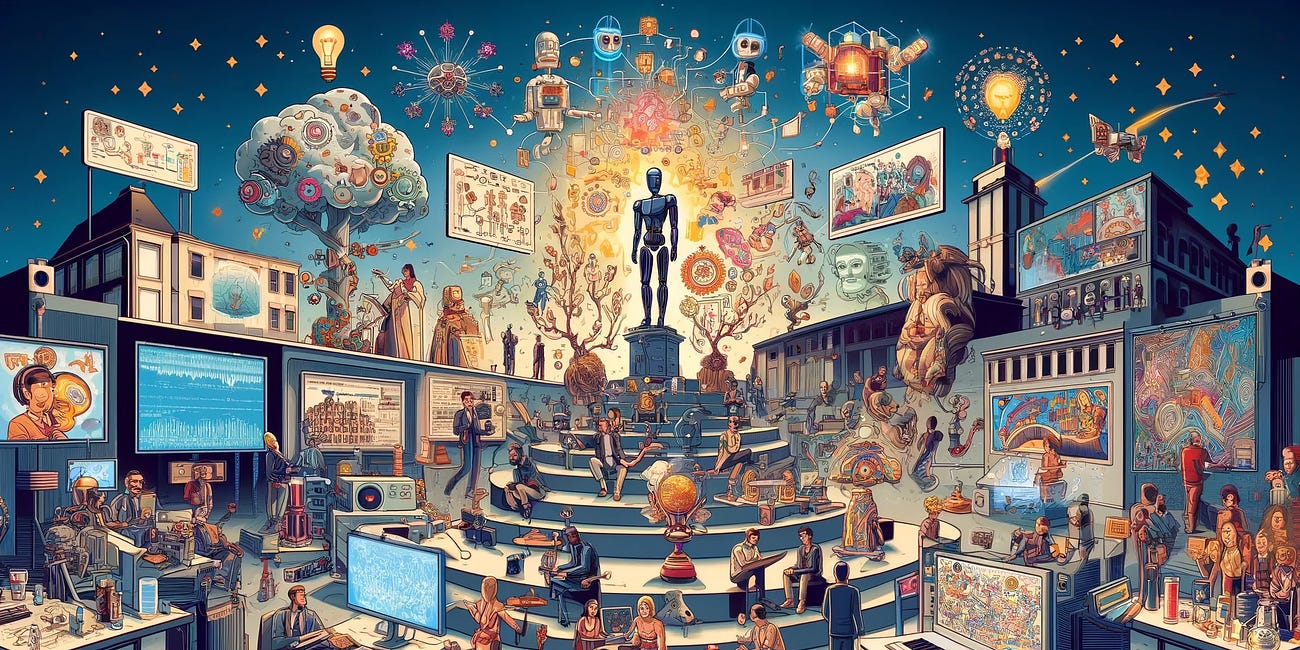- Pascal's Chatbot Q&As
- Posts
- GPT-4o: U.S. District Judge William Orrick has allowed key copyright infringement and trademark claims to move forward in the lawsuit brought by artists against companies like Stability AI and Runway
GPT-4o: U.S. District Judge William Orrick has allowed key copyright infringement and trademark claims to move forward in the lawsuit brought by artists against companies like Stability AI and Runway
The court also addressed trademark issues, particularly noting that Midjourney, another company implicated in the case, produced images similar to artists' works when their names were used as prompts.

Question 1 of 2 for ChatGPT-4o: Please read the article “Artists Score Major Win in Copyright Case Against AI Art Generators” and tell me what the latest developments are in this court case
ChatGPT-40’s answer:
The latest developments in the court case regarding the copyright lawsuit against AI art generators are significant. U.S. District Judge William Orrick has allowed key copyright infringement and trademark claims to move forward in the lawsuit brought by artists against companies like Stability AI and Runway, which developed the AI model known as Stable Diffusion. This model is central to the case, as it is alleged to have been built using billions of images scraped from the internet without proper authorization, many of which are copyrighted.
The court's decision marks a pivotal win for the artists, as it found that Stable Diffusion might have been created specifically to facilitate copyright infringement. This ruling could have broader implications, potentially drawing other companies that used the Stable Diffusion model into the litigation.
Additionally, the court dismissed some claims, such as those for breach of contract and unjust enrichment, but it allowed the case to proceed to the discovery phase. This phase will likely involve examining how the AI models were trained using copyrighted material and exploring the transparency of the open-source software at the heart of Stable Diffusion.
The court also addressed trademark issues, particularly noting that Midjourney, another company implicated in the case, produced images similar to artists' works when their names were used as prompts, which supported the trademark claims.
Overall, this case represents a significant legal challenge to the use of AI in generating art, particularly regarding the use of copyrighted works to train AI systems without proper authorization. The outcome of this case could have far-reaching consequences for the AI and creative industries.
Text continues below the image»

Question 2 of 2 for ChatGPT-4o: List all possible consequences of these specific developments for similar court cases against AI makers
ChatGPT-4o’s answer:
The specific developments in this case, where the court has allowed copyright infringement and trademark claims to move forward, could have several significant consequences for similar court cases against AI makers. Here are the possible outcomes and impacts:
Precedent for Copyright Claims:
This case could set a legal precedent that AI models trained on copyrighted materials without proper authorization may constitute copyright infringement. Future cases could reference this ruling, potentially leading to a wave of lawsuits against AI developers who have used similar practices.
Increased Scrutiny on AI Training Datasets:
AI companies may face increased scrutiny regarding how they obtain and use training datasets. This could lead to more stringent regulations and guidelines on the use of copyrighted material in AI training.
Expanded Scope of Liability:
The ruling could expand the scope of liability to not only the developers of AI models but also companies that use these models in their products. This could result in more companies being drawn into similar lawsuits, especially if they use AI models developed by third parties.
Potential for Massive Damages:
If AI companies are found liable for copyright infringement, they could face substantial financial penalties. This could include damages for each instance of infringement, which could be considerable given the scale of AI model usage.
Trademark Implications:
The court’s decision to allow trademark claims to proceed could encourage more artists and creators to pursue trademark infringement claims if AI-generated works are found to misuse their names or likenesses. This could lead to stricter controls on how AI-generated content is labeled and marketed.
Changes in AI Development Practices:
AI developers might need to change their practices, such as ensuring that their models do not use copyrighted materials without permission or developing new ways to train AI models that do not rely on copyrighted content. This could slow down innovation or increase costs in AI development.
Increase in Class-Action Lawsuits:
The case might inspire more collective legal actions, with groups of artists or creators joining forces to sue AI companies. This could result in more class-action lawsuits being filed, potentially increasing the legal pressure on AI companies.
Impact on Open-Source AI Projects:
Open-source AI projects, like Stable Diffusion, could face significant challenges if courts begin to require that open-source contributions be free from copyrighted material. This could limit the development and distribution of open-source AI tools.
Regulatory Responses:
Governments and regulatory bodies might take note of these legal developments and consider introducing new laws or regulations to govern the use of copyrighted material in AI training. This could lead to a more regulated environment for AI development.
Market Impact:
AI companies could face reputational damage or loss of market share if they are perceived to be infringing on artists’ rights. Consumers and businesses might be more cautious in adopting AI products, leading to a potential slowdown in the AI market.
Ethical and Business Reforms:
Companies might be compelled to adopt more ethical practices in AI development, such as obtaining licenses for copyrighted materials or compensating artists whose works are used in AI training. This could lead to the emergence of new business models and licensing frameworks.
Technological Innovation in Rights Management:
The need to avoid copyright infringement could spur technological innovation in the development of tools and systems for managing rights and permissions in AI training datasets.
These consequences highlight the potentially far-reaching impact of this case, not only for AI developers but also for the broader technology, legal, and creative industries.

·
26 APR

·
8 AUG

·
22 JUL

·
2 JUN
